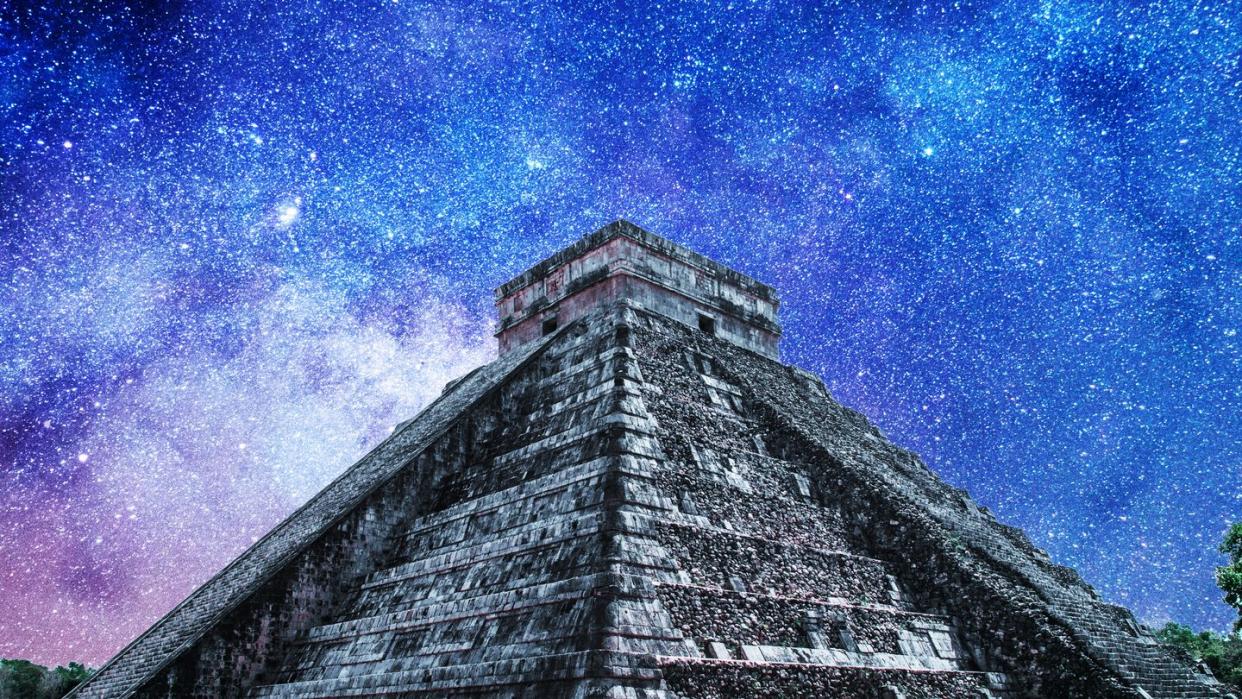Archaeologists Found a Smoking Gun Behind the End of the Maya Kingdom’s Reign

The discovery of an early ninth century burning event marks a turning point in Maya rule, archeologists say.
The find is a rare archaeological pinpointing of a historic turning point.
Burning Maya artifacts, some a century old at the time, was likely a well-attended public event.
Archaeologists discovered clues to a fire in Guatemala from between 733 and 881 AD that they say represents a key turning point in Maya rule—a very public turning point.
The discovery at the Maya site of Ucanal in Guatemala “marked a public dismantling of an old regime”—a rather pivotal moment in the collapse of rulers and key point in political power that isn’t often shown so clearly from an archeological find, the authors write in a study published in the journal Antiquity.
The event in question occurred at the capital of the K’anwitznal kingdom near a burial site. The bodies and their ornaments—items include a jewel-adorned stone mask, fragments of a greenstone diadem, and jade ornaments—were moved from a tomb to a public burning site, where fire engulfed some of the centuries-old items for all to see.
“This event marked a moment of change in the kingdom and in the lowlands,” the authors write. “Rather than examine this fire-burning event as a bookend to Maya history, we view it as a pivot point around which the K’anwitznal polity reinvented itself and the city of Ucanal went on to a flourishing of activities.”
The new leadership regime welcomed a non-royal leader called Papmalil, and there is little in the written record indicating how he came to power. “Papmalil’s rule was not only seminal because of his possible foreign origins—perhaps breaking the succession of ruling dynasts at the site—but also because his rule shifted political dynamics in the southern Maya lowlands.”
The study’s authors, led by Christina Halperin at the University of Montreal, state that Papmalil appears to have ushered in an era of prosperity. Substantial construction occurred in both the civic-ceremonial core and outer residential zones of the city following the power shift.
That new era may have had a dramatic beginning.
The team discovered the fire event during 2022 excavations in the construction fill of a temple-pyramid situated in a public plaza, and the evidence shows that there was no effort to protect the burial deposit. The team believes that at least four adults were part of the burn remains, and that the fire reached a temperature of over 800°C. Included with the bodies were 1,470 fragments of greenstone pendants, beads, plaques, and mosaics, along with large blades—all representing a “single burning event.” The quantity and quality of the burnt and broken ornaments indicate they came from a royal tomb, likely belonging to multiple individuals.
The team said evidence indicates that the human bone and ornaments had once been part of the contents of a Late Classic royal tomb, and the deposit was part of a fire-entering rite that “marked the symbolic and literal destruction of an earlier K’anwitznal dynastic line.”
The authors state that the event “appears to have bene an act of desecration: it was dumped at the edge of a crude wall used as a construction pen and no effort was made to protect the fragmented bones and ornaments from the tomb blocks deposited on top of them as construction fill.” It all likely made for a “dramatic public affair” meant to be charged with emotion. “It could dramatically mark,” they wrote, “the dismantling of an ancient regime.”
You Might Also Like


